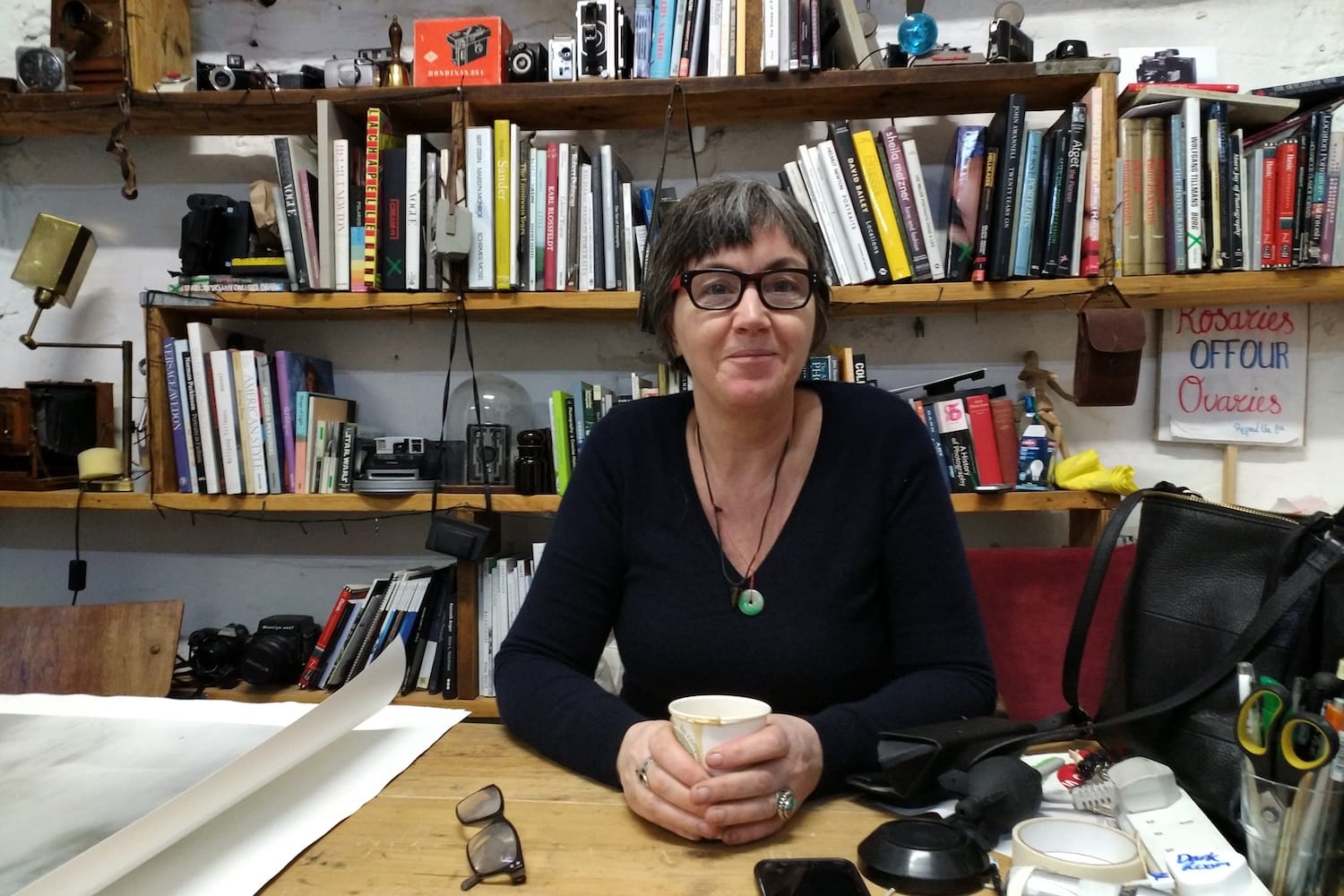What’s the best way to tell area residents about plans for a new asylum shelter nearby?
The government should tell communities directly about plans for new asylum shelters, some activists and politicians say.
At The Darkroom in Stoneybatter, Mella Travers teaches others how to create black-and-white images the old-fashioned way.

Mella Travers flicks the switch and an almost claustrophobic blackness ensues.
Noises emerge from the darkness. A bottle opener popping open a film canister. Hands scuffling along the worktop. The occasional sigh. Then a soft swear.
“I’m actually confused as hell now,” says Travers.
There is, it turns out, an unexpected extra film on the desk, which has thrown her off her normal rhythm for the in-the-dark loading a film roll in a canister.
Travers has been trying to teach Bob Gallagher the knack of working in a darkroom, in fact, in The Darkroom – a space which has has been open for about three years here on Brunswick Street, where it moved after Block T left Smithfield Square.
In that time, Travers has grown it from a studio to an exhibition space, alongside an area with facilities for analogue and digital photography which they use to teach courses, which includes, of course, a darkroom too.
“One of my students Darragh Synott, who was in one of the courses in Block T, he decided he wanted to invest in the arts so he put in the money for all the material and everything else,” says Travers.
It’s a beautiful high-ceilinged studio in a small courtyard. A not-for-profit venture, members can sign up for an annual subscription of €120 per year. For that, they get discounts off some courses, discounted use of the photography studio, access to the film scanners and reduced rental cameras.
Inside, the space is filled with bookshelves with reading on everything from fashion to photography’s history to the techniques of portraiture.
A large black and white print is drying on the wood-panelled floor. It shows a child’s hand reaching into the air. Film cameras of various vintages are scattered along shelves and different surfaces.
“I love teaching,” says Travers. She used to teach at Griffith College and, before setting up The Darkroom, she worked as a fashion photographer for Hot Press.
Graduating with a BA from London’s University of Westminster, Travers threw herself into the more conceptual side of photography.
“I was a very good colour printer at the time,” says Travers, “and did a lot of experimental stuff with that at the time.”
In London, she exhibited her work quite a lot, one of her first exhibitions “Untitled Colours” also being showcased in Canada.
She then moved into fashion photography “as I was raising two kids and I had to earn money”, working with the likes of Hot Press, Irish Tatler and Sunday Independent’s Life Magazine.
Fashion photography progressively became more and more of a challenge though, she says. Analogue gave way to digital and health problems took a toll.
She recalls the presence of big teams on fashion shoots – producers, agents, advertisers, gawking over her shoulder at the images she was shooting on the screen of her digital camera. It was a pressure that didn’t exist in the time of analogue.
“It’s okay if something isn’t perfect because we never made anything perfect,” says Travers. But there’s something in digital photography that strives for perfection, she says.

Although they have courses on digital photography, Travers enthuses most when she’s talking about analogue photography and the facilities that exist for its survival in The Darkroom.
“The core thing here is to have people that teach here that can teach on all the different levels,” says Travers.
“When you’re giving information to people you have to appeal to the different senses, like with aperture you have to show how it actually works and how it actually happens,” she says.
Bob Gallagher, the current emerging artist in residence, usually works in film, he says.
He makes music videos for musicians such as Soak, Myles Manley, Girl Band and Saint Sister, as well as directing his own short films.
It’s nice to work in a different medium, he says.
That’s what the emerging artist residency is about: to give professional artists working in a non-photography form an opportunity to explore their work and ideas through photography too for a while.
He’s doing 3D photography here, he says. “Shooting four perspectives at once and then combining that into an animated gif. But also Mella wants me to print large prints to exhibit.”
Gallagher takes his phone from under his black apron with images he has worked on. There are black and white images of the musician known as Wastefellow being hit with a carton of Ribena.
3D photography works best with images in motion, says Gallagher.
“They’re quite cool, aren’t they?” says Travers.
Gallagher’s exhibition opens on 22 March at The Darkroom. Before this the space will host a solo exhibition by Italian photographer Giulia Berto. “Fragments” will open on Thursday 7 March, with a reception for the artist from 6pm to 9pm.
Get our latest headlines in one of them, and recommendations for things to do in Dublin in the other.